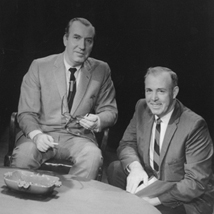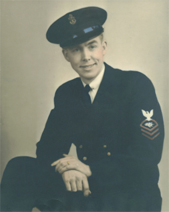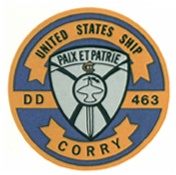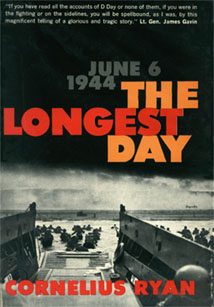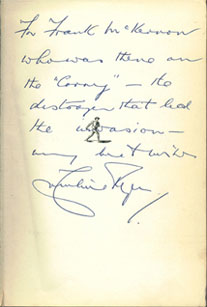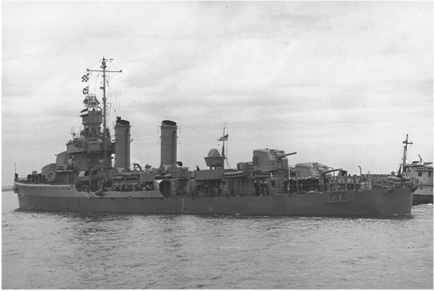USS Corry (DD-463) leads the
Normandy Invasion
D-DAY
June 6, 1944
More than 5,000 Allied vessels, including some 700 warships, crossed the English Channel for the invasion of Nazi-occupied Europe. The destroyer USS Corry (DD-463) led this massive Allied assault force from southern England to Normandy, France.
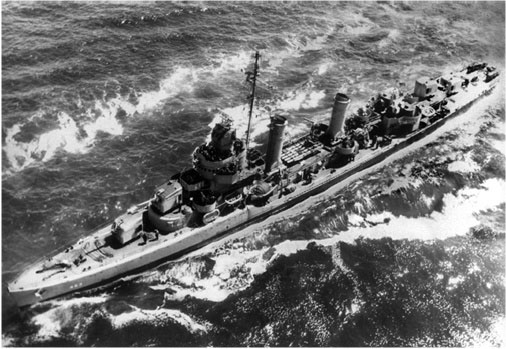
Destroyer USS Corry (DD-463)
D-Day Operation Order Indicating Lead
Convoy:
|
Convoys bound for Utah Beach (Force "U") made up the right flank of the invasion armada. Convoy U-2B was out farthest ahead of all other convoys crossing the English Channel. Destroyer USS Fitch (DD-462) was close by the Corry, as noted below in the operation order. See further below for renowned author Cornelius Ryan's details on the Corry being the lead destroyer of the invasion. |
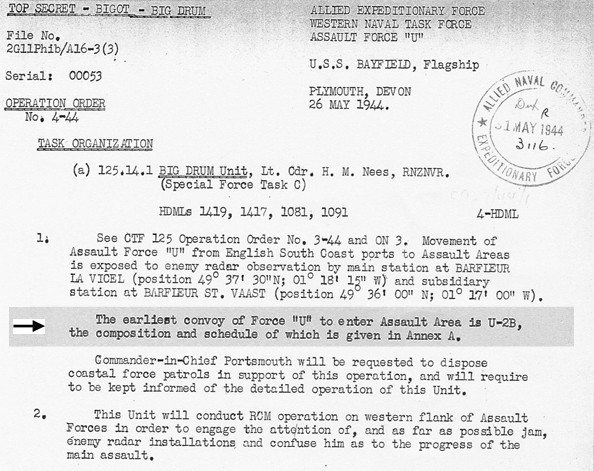
2G11Phib/A16-3(3) Operation Order 4-44
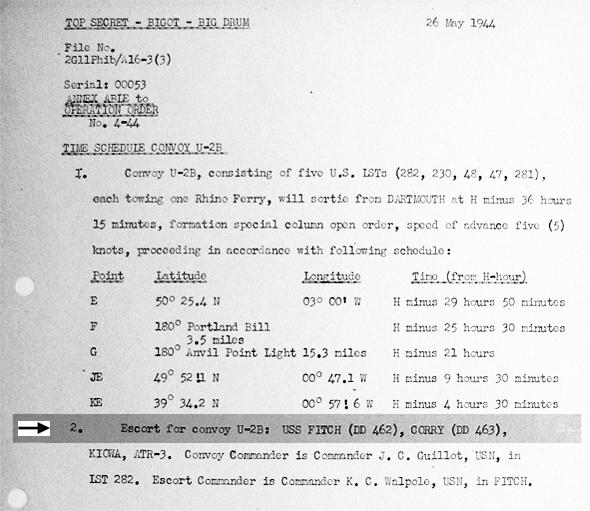
2G11Phib/A16-3(3) Operation Order 4-44 Annex Able
 Above records source: U.S. National Archives - Declassified.
Above records source: U.S. National Archives - Declassified.
Below is author Cornelius Ryan's signed copy of his classic D-Day book, The
Longest Day, along with chapter segments on the Corry.
In 1966, USS Corry Chief Radio Technician
McKernon met The Longest Day author Cornelius Ryan, who
signed his copy of the classic D-Day book, as seen below.
